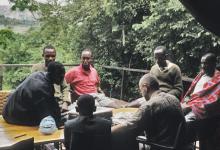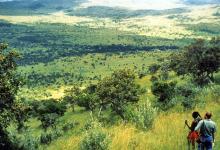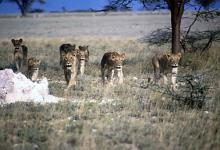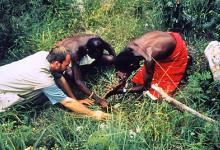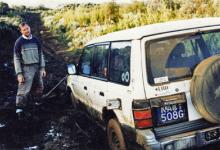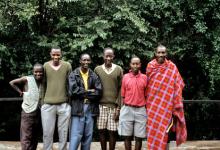East Africa
Traditional plant use is of tremendous importance in many societies, including most rural African communities. This knowledge is however, rapidly dwindling due to changes towards a more Western lifestyle, and the influence of modern tourism.
In case of the Sekenani Maasai, the recent change from a nomadic to a more sedentary lifestyle has not, thus far lead to a dramatic loss of traditional plant knowledge, when compared to other Maasai communities. However, in Sekenani, plants are used much less frequently for manufacturing tools, and for veterinary purposes, than in more remote areas. While the knowledge is still present, overgrazing and over-exploitation of plant resources have already led to a decline of the plant material available. This paper examines the plant use of the Maasai in the Sekenani Valley, North of the Masaai Mara National Reserve. The Maasai pastoralists of Kenya and Tanzania use a large part of the plants in their environment for many uses in daily life. The plant use and knowledge of the Sekenani Maasai is of particular interest, as their clan, the "Il-Purko", was moved from Central Kenya to this region by the British Colonial Administration in 1904.
Research indicates that despite their relocation 100 years ago, the local population has an extensive knowledge of the plants in their surroundings, and they ascribe uses to a large percentage of the plants found. One-hundred-fifty-five plant species were collected, identified and their Maa names and traditional uses recorded. Although fifty-one species were reported as of "no use", only eighteen of these had no Maasai name. Thirty-three were recognized by a distinctive Maa name. Thirty-nine species had a medicinal use, and 30 species served as fodder for livestock. Six species could not be identified. Of these plants five were addressed by the Maasai with distinct names. This exemplifies the Sekenani Maasai\'s indepth knowledge of the plant resources.
Traditionally, the Maasai attribute most illnesses to the effect of pollutants that block or inhibit digestion. These pollutants can include "polluted" food, contact with sick people and witchcraft. In most cases the treatment of illness involves herbal purgatives to cleanse the patient. There are alsofrequent indications of plant use for common problems like wounds, parasites, body aches and burns.

